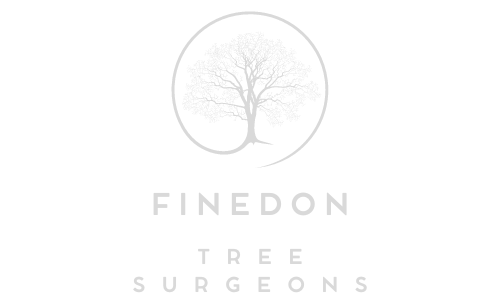When to Call an Arborist: Signs You Need Emergency Tree Removal ASAP
Trees are valuable assets to any property, offering shade, beauty, and environmental benefits. However, there are times when a tree can become a hazard, and prompt action is necessary to prevent damage to property or harm to people. At Finedon Tree Surgeons, based in Finedon, Northamptonshire, we specialise in emergency tree removal services to keep your property safe. In this blog post, we’ll highlight the key signs that indicate you need to call an arborist for emergency tree removal as soon as possible.
1. Visible Leaning or Tilting
One of the most obvious signs that a tree may need emergency removal is if it starts to lean or tilt noticeably. While some trees naturally grow at an angle, a sudden or increased lean is a warning sign of root instability or structural weakness.
- What to watch for: If a tree that previously stood straight begins to tilt, particularly after a storm or heavy winds, it’s a sign that the root system may be compromised. In this case, immediate removal is necessary to prevent the tree from falling.
- Why it’s dangerous: Leaning trees pose a serious risk to nearby buildings, vehicles, and people. If the tree is large, the damage caused by a sudden fall can be severe.
2. Cracks or Splits in the Trunk
Deep cracks or splits in the trunk are another sign that a tree’s structural integrity has been compromised. These fractures can occur after strong winds, heavy rains, or due to disease.
- What to look for: Large vertical cracks or splits in the tree trunk are often visible to the naked eye. These can weaken the tree and increase the likelihood of it breaking apart in extreme weather conditions.
- Why it’s urgent: A tree with a cracked or split trunk is at high risk of collapse. Immediate attention from a professional arborist is essential to assess the damage and remove the tree if necessary.
3. Large Dead Branches
Dead or decaying branches are not only unsightly, but they can also be dangerous, especially during a storm. If you notice that your tree has large dead branches, it’s time to call an arborist.
- What to check: Look for branches that have lost their leaves, even during the growing season, or appear brittle and dry. These are signs that the branch is no longer receiving nutrients from the tree.
- Why it matters: Dead branches are prone to breaking and falling, which can cause injury or property damage. An arborist can safely remove dead branches and assess the overall health of the tree.
4. Root Damage or Uplifted Soil
The root system is the foundation of a tree, and any damage to the roots can seriously weaken the tree’s stability. Visible root damage or uplifted soil around the base of the tree is a clear indicator that the tree may be in danger of falling.
- What to notice: Uplifted soil, especially after a storm, or exposed roots that have been damaged by nearby construction or landscaping work.
- Why it’s a concern: Trees with compromised root systems are unstable and can topple without warning, posing a significant threat to nearby structures and people.
5. Fungal Growth on the Trunk or Roots
Fungal growth on a tree, particularly around the base or on the trunk, is a sign of internal decay. While not all fungi are harmful, certain types, such as bracket fungus, indicate that the tree is rotting from the inside out.
- What to look for: Mushrooms or fungi growing on the tree’s trunk, near the roots, or on decaying branches.
- Why it’s critical: Fungal growth is a clear sign that the tree is dying or already dead, and its structural integrity is compromised. Immediate removal is recommended to prevent the tree from collapsing.
6. Storm Damage
After a storm, trees can suffer significant damage, even if they remain standing. High winds, lightning, and heavy rainfall can weaken the tree’s structure, making it prone to falling in future storms.
- Signs to check: Broken limbs, cracks in the trunk, or branches that are hanging loosely after a storm.
- Why prompt action is needed: Trees that have sustained storm damage can be unpredictable, and the weakened structure may collapse without further warning. Calling an arborist for an emergency inspection is crucial to assess the tree’s condition and remove it if necessary.
7. Hollow or Decayed Trunks
If a tree’s trunk has become hollow or has large cavities, it’s a sign that the tree is no longer structurally sound. Hollow trees are prone to breaking, even in mild weather conditions.
- What to observe: Large cavities or sections of the trunk that feel hollow when tapped.
- Why it’s urgent: A hollow tree is structurally weak and can fall, potentially causing significant damage to property or harm to individuals nearby. Immediate removal is often the safest option.
Conclusion
Recognising the signs of a dangerous tree and acting promptly is essential for the safety of your property and loved ones. If you notice any of the warning signs outlined above, it’s crucial to call a professional arborist to assess the situation and remove the tree if necessary. At Finedon Tree Surgeons, we specialise in emergency tree removal, providing swift and safe services to address tree hazards before they cause damage.
Call us on: 01933 426 193
Click here to find out more about Finedon Tree Surgeons
Click here to complete our contact form and see how we can help with your tree needs.

